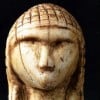Mokosh - Ancient Slavic Mother Goddess
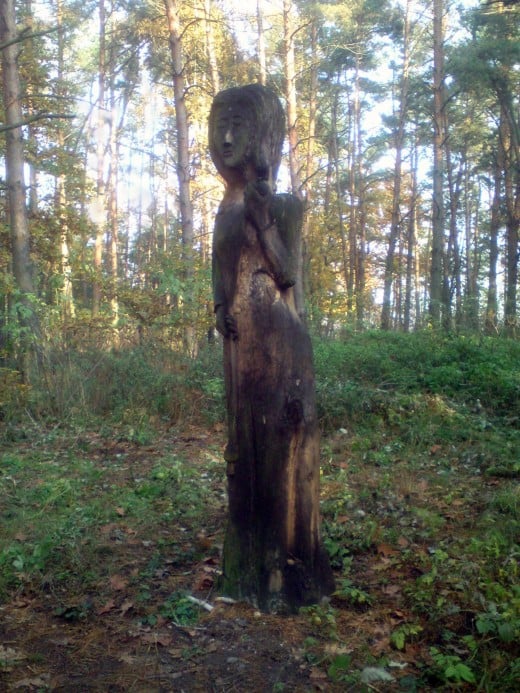
Mokosh is a great mother goddess of ancient Slavs, the only goddess whose idol was placed in Kiev by the great prince Vladimir alongside several male gods. She was special to women, being the protectress of motherhood, marriage, childbirth, women’s crafts, magic and fate. Not much factual information can be gathered as to her functions and attributes. Ancient Slavs didn’t leave any written records from the times before they converted to Christianity and learned alphabet and writing. So, we mostly find out about her from the writings of Christian monks who were instructing people against worshipping pagan deities and scolding them for it. Mokosh is often depicted in traditional Slavic embroidery.
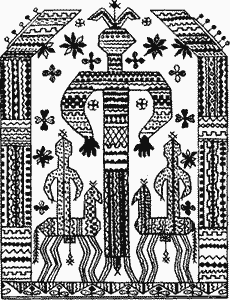
Name Meaning
There are different ideas about what her name means. The two most common spellings are Makosh and Mokosh. If we go with Professor Rybakov, “Ma” stands for “mother”, and “kosh” means either “lot” or “grain basket”. “Grain basket” hints at the idea of Makosh being a harvest goddess. On the other hand, “lot” refers to casting lots to determine fate. Rybakov also believed that Mokosh is the deity depicted with the horn of plenty on one of the sides of Zbruch Idol.
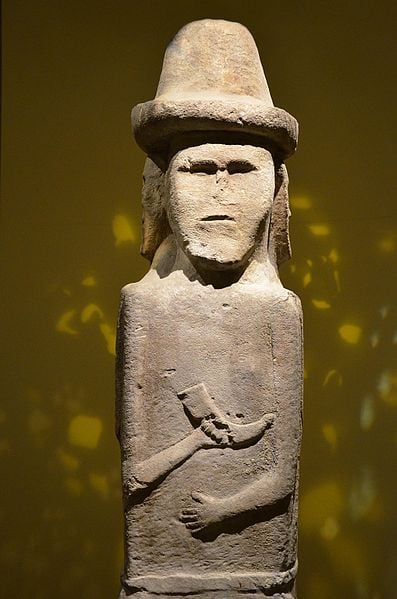
Another interpretation of her name is based on the root “mok” (“wet”), and there’s a strong connection of the goddess with moisture, rain, and sacred or healing springs. There was a ritual of sacrificing a bundle of flax fiber or wool (sliver) to her by throwing it in a well.
Mokosh and Saint Paraskeva
Mokosh is known as a patron of traditional women's crafts like spinning, weaving and making clothes. There was a belief that Mokosh walks through villages and peeks into houses to check on spinners. They said, if the spinner fell asleep but her wheel is spinning by itself, it’s Mokosh doing the work. After the adoption of Orthodox Christianity, this and other functions were transferred to Saint Paraskeva whose name means “Friday”. She was very popular among women. There are many stories about this saint that help to throw light on the more ancient cult of Mokosh. For example, Paraskeva’s images used to be placed near healing springs and there were special ritual words to be said when drawing water from them, quite pagan in their meaning, even though using names of Christian saints. People used to pray to this saint for rain and good harvest. Young girls would ask her to send them husbands. Sacrifices of yarn, thread, and cuts of fabric were made to her. People would also leave food for her on her feast days. These offerings seem rather unusual for a Christian saint, but very appropriate for a pagan goddess.There was a taboo on spinning yarn, weaving and sawing on Friday because these actions would hurt the saint by poking her with needles, tying her hair into knots, and thus provoking her vengeance. In a weird way, the image of Mokosh also survived with the belief in a small household demon that loves to spin and can be sometimes heard at night using the spinning wheel if the yarn was left on it overnight by the woman of the house. An interesting detail is that, this demon would leave a wet spot where she was sitting.
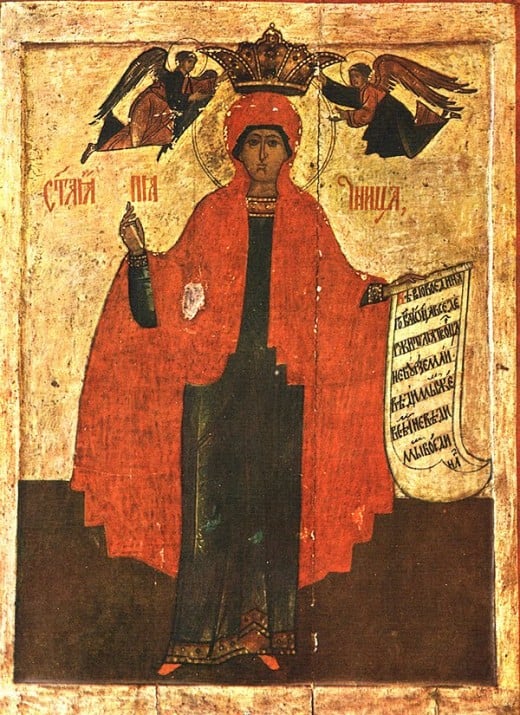
The Spinner of Fate
Another important function of Mokosh, which was later transferred to Paraskeva, was that of deciding a person’s fate. In other religions, too, this function was often attributed to divine spinners, for example, Moirai, Parcae, Norns, Frigg. One legend tells about a poor man meeting Paraskeva in his travels and sharing his meal with her. To thank him, she advised that he should go to a nearby village where he would find a rich wife for himself. She also granted him a long life of 100 years. He did as he was told and had a happy life until he turned 100. Then he met Paraskeva again and asked for another 100 years. She granted his wish. After another 100, he repeated his request and she granted it again. Finally, when these 100 years came to an end, the man was already tired of living, and Paraskeva took him to the other world. First, she showed his soul a very beautiful place where he wanted to stay, but she led him away to another place. This one was very nice too, but again, they didn’t stay. Finally, she brought him to a gate, which she opened and he saw a horrible place full of demons torturing people’s souls. She said, “If you died when you were supposed to, you could have stayed in the first place. If you died after your second hundred years, you could have stayed in the second place we saw. But after your third hundred years, you have accumulated so many sins that the only suitable place for you now is hell.” And she pushed the man through the gate. So we see in this story, how she changed his destiny when he was alive, and then judged him after death. This story has absolutely nothing to do with the life of actual saint Paraskeva. It was one of many legends created by people around her name and they most probably have roots in the ancient pagan worship of Mokosh. The cult of Paraskeva the Friday was extremely popular among peasant women all over Russia, Ukraine and Belarus. There’s a mention of her as “the water and earth mother” which really invokes the image of an ancient goddess rather than Christian saint.
The connection of Mokosh to Friday is also interesting, because this is the day of Scandinavian Frigg (as well as Freya), famous for her foreknowledge and often depicted with a distaff as a master of seidr, a pre-Christian Norse magic of manipulating destiny by weaving new events into being.
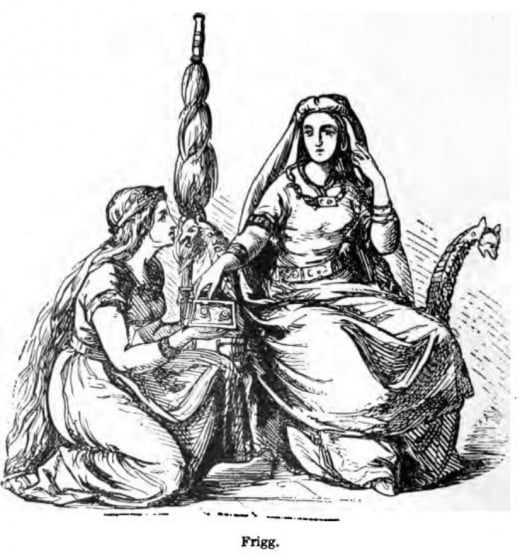
© 2018 Oksana
